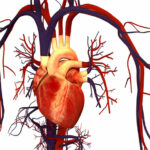‘ULTRA-PROCESSED FOODS’ – PROBLEMATIC FOODS OR PACKAGING?

Prospective cohort studies have found associations with high consumption of ‘ultra-processed foods’ and increased risk of overweight, obesity, high blood pressure, high cholesterol, breast cancer, cardiovascular diseases (e.g., heart disease and stroke) and all-causes of death (mortality). Authors of these studies have suggested many potential reasons for these associations:
- Compared to minimally-processed foods and drinks, ‘ultra-processed foods’ have a higher total fat, saturated fat, added sugars and salt content, together with a lower fibre, vitamin and mineral density. Therefore, excessive consumption may result in an overall deterioration of the nutritional quality of the diet.
- The convenience and palatability of ‘ultra-processed foods’ may encourage some people to consume less minimally-processed foods such as fruit and vegetables.
- ‘Ultra-processed foods’ may also affect glycaemic responses (e.g., due to a high GI and/or GL) and satiety and create a gut microbial environment that promotes inflammatory disease.
- Cosmetic additives frequently added to ‘ultra-processed foods’ (such as glutamates, emulsifiers, sulphites and carrageenan) or several compounds that are formed during their processing (such as acrylamide or acrolein) may also promote disease.
It is important to note that, despite the associations and suggested mechanisms, even the biggest proponents of the NOVA system admit that not all food processing is bad. Cooking is processing; freezing is processing; as is the dehydration that gives us dried fruit, or lentils and beans. Baking any wholegrain bread or boiling pasta is more extensive processing still. ‘Ultra-processed foods’ also include foods generally considered healthy, such as vegan and most plant-based milk alternatives, as well as meat substitutes, and as a result, they contribute∼40% of total energy intake in vegetarian and vegan diets, which are associated with increased longevity.
We must be careful not to throw the proverbial baby out with the bath water.
The NOVA classification system is not easy to use
A recent study involving more than 150 French food and nutrition specialists evaluated and classified 120 marketed foods (19,080 assignments) and 111 generic foods (19,647 assignments) using the NOVA system. Even though the evaluators had high confidence in their assignments, only 3 marketed foods and 1 generic food were assigned to the same NOVA group by all the evaluators, and most of the foods in both lists were placed in 2, 3, or even 4 different NOVA groups by different evaluators. Therefore, the level of misclassification, even among food and nutrition scientists, is unacceptably high, and the results of this study severely undermine the validity of all of the observational studies on ‘ultra-processed foods’ and associated health outcomes.
Problematic packaging?
While not directly related to the food or beverages per se, the packaging of ‘ultra-processed foods’ and drinks might also help explain some of the associated health effects of these products. ‘Ultra-processed foods’ are frequently packaged in materials that are a source of endocrine disrupting chemicals such as phthalates and bisphenol (chemicals added to plastics to increase their flexibility, transparency, durability, and longevity), associated with adverse health outcomes, especially in pregnancy. Observational studies have found associations with Bisphenol A (BPA) exposure and higher risk of type 2 diabetes, obesity, abdominal obesity, and high blood pressure and phthalates with type 2 diabetes and insulin resistance.
Though contained in many consumer products, food and drinks are a common source of phthalates and bisphenols attributed mainly to food production, processing, and packaging practices; food storage conditions and, also animal feeding practices. These chemicals are known to migrate from food contact materials (plastics, paper, metal, glass, and printing inks) that protect food from physical damage and microbial spoilage. The long-shelf life and ready-to-eat characteristics of ‘ultra-processed foods’ entails that these substances are likely to leach into the food product, making ‘ultra-processed foods’ a potential delivery vehicle for phthalates and bisphenols in humans. This leakage could be more severe in ready-to-eat or take-away food often heated or served warm in paper, cardboard or plastic containers.
It’s important to note that food industry has been working to decrease the presence of phthalates and bisphenols in food and beverage packaging, but that changes cannot happen overnight. Of course, packaging is an important part of food reformulation and should not be overlooked in our efforts to determine the causes of rising rates of overweight, obesity and associated conditions around the world.
Overall, due to the limitations in the classification of foods using the NOVA system, the evidence base supporting its associations with health conditions, and the possibility that it may be the packaging rather than ‘ultra-processed foods’ per se that is behind at least some of the health associations, it is too early to include the NOVA system in Dietary Guidelines.
Read more:
- Astrup and Monteiro. Does the concept of “ultra-processed foods” help inform dietary guidelines, beyond conventional classification systems? NO. Am J Clin Nutr. 2022
- Monteiro and Astrup. Does the concept of “ultra-processed foods” help inform dietary guidelines, beyond conventional classification systems? YES. Am J Clin Nutr. 2022
- Braesco and colleagues. ‘ultra-processed foods’: how functional is the NOVA system? Eur J Clin Nutr. 2022.
- Martínez Steele and colleagues. Association between dietary contribution of ‘ultra-processed foods’ and urinary concentrations of phthalates and bisphenol in a nationally representative sample of the US population aged 6 years and older. PLoS One. 2020








